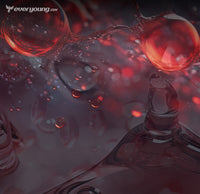2. Utilization of the Egg Reserve
The body regulates the utilization of the egg reserve through a complex interplay of hormones. In each menstrual cycle, the follicle-stimulating hormone (FSH) stimulates the growth of several follicles, which are egg-containing structures within the ovaries. Usually, one follicle becomes dominant and proceeds to ovulation, while the others undergo atresia. The ovulated egg then travels down the fallopian tube, where it may meet sperm and become fertilized.
As a woman ages, the hormonal regulation of this process changes, often leading to alterations in menstrual cycle regularity and, eventually, the cessation of ovulation at menopause. This period marks the depletion of the functional ovarian reserve.
Clinical Considerations
Understanding the ovarian reserve is crucial in reproductive medicine and gynecology. It aids in diagnosing fertility issues, planning for a family, and understanding the potential risks and benefits of fertility treatments. At the Everyoung.com Research Center, we have often suggested women consider their future family plans when getting informed about their ovarian reserve, as it can impact decisions regarding the timing of childbearing or the use of assisted reproductive technologies.
Therefore, the ovarian reserve is a complex and dynamic aspect of female reproductive health, influenced by genetic, hormonal, and environmental factors. The concept of "egg count" provides valuable insights into fertility potential but is surrounded by misconceptions that often lead to confusion. We have seen that even a deeper understanding of how the body utilizes its egg reserve can help demystify many aspects of female fertility, giving women the knowledge to make informed decisions about their reproductive health.







